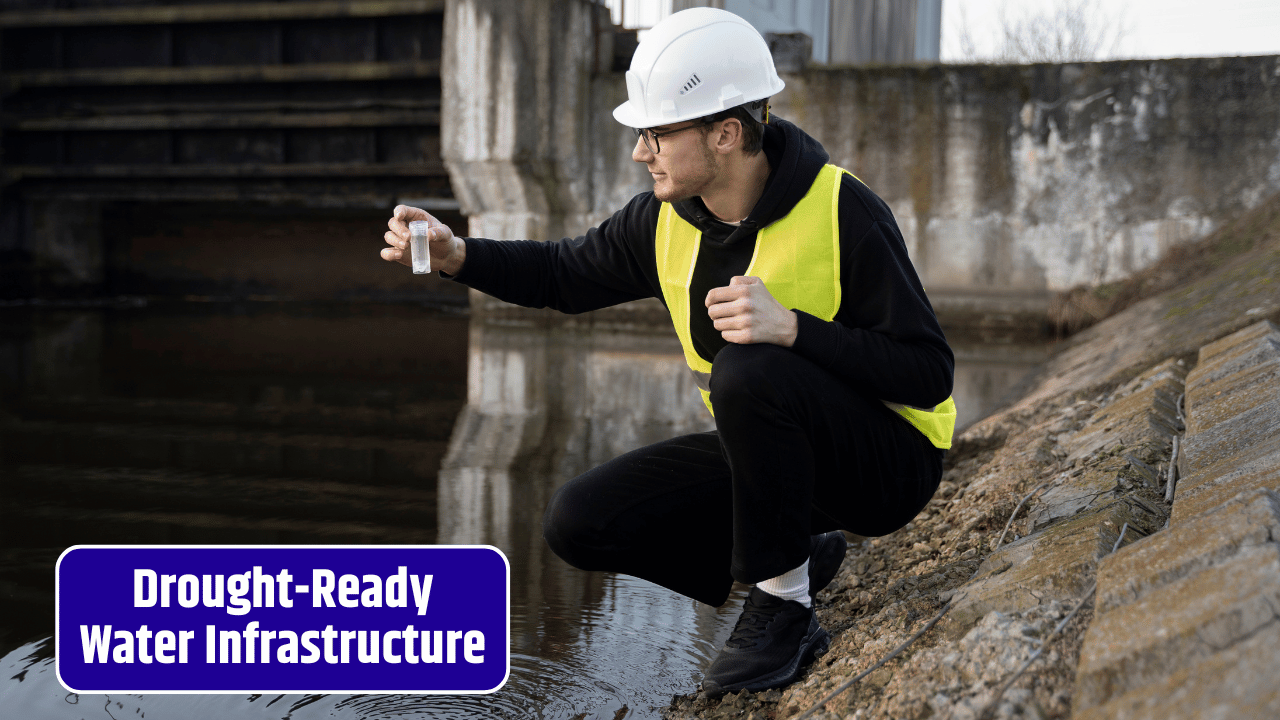As droughts become more frequent and severe due to climate change, the need to strengthen drought resilience in agricultural water infrastructure has never been greater. Agriculture accounts for roughly 70% of global freshwater use, making it especially vulnerable to water scarcity. Building resilient systems means not only securing reliable water supplies but also optimizing usage, adopting flexible policies, and investing in sustainable, climate-smart infrastructure.
Table of Contents
The Rising Threat of Agricultural Drought
Droughts reduce water availability for irrigation, disrupt planting and harvesting cycles, and threaten crop yields. In regions like the U.S. Southwest, persistent drought conditions are straining aquifers, reservoirs, and irrigation canals — many of which were built decades ago and are now inefficient or inadequate.
Key challenges include:
- Declining surface water supplies due to reduced snowpack and rainfall
- Overdrafted groundwater basins unable to recharge in dry years
- Aging delivery systems with high water losses due to leaks and evaporation
- Inflexible water rights that hinder adaptive management during droughts
Key Strategies for Drought-Resilient Agricultural Infrastructure
Drought resilience planning requires a comprehensive approach that blends engineering, technology, and policy reforms. Here are the primary strategies:
1. Modernizing Irrigation Systems
Outdated irrigation methods, such as flood irrigation, can waste significant amounts of water. Transitioning to precision irrigation technologies boosts efficiency and crop productivity.
Upgrades include:
- Drip and micro-sprinkler systems
- Soil moisture sensors and remote monitoring
- Automated irrigation scheduling using weather data
These improvements reduce water use by 30–50% while maintaining or even increasing yields.
2. Enhancing Water Storage and Conveyance
Infrastructure for storing and moving water must be adaptable to variable supply conditions. This includes:
- Lined canals and pipelines to reduce seepage and evaporation
- On-farm and regional reservoirs for water banking during wet years
- Aquifer recharge projects to store excess water underground for later use
| Infrastructure Upgrade | Benefit |
|---|---|
| Drip irrigation | Efficient, targeted water use |
| Lined canals | Reduced water loss through seepage |
| Recharge basins | Groundwater replenishment |
| Smart controllers | Adaptive water delivery in real time |
3. Promoting Groundwater Sustainability
Overreliance on groundwater during drought years is depleting key aquifers. Laws like California’s Sustainable Groundwater Management Act (SGMA) are driving the creation of local plans to balance use and recharge.
Key actions include:
- Metering and monitoring wells
- Groundwater recharge projects
- Incentivizing reduced pumping in dry years
4. Integrating Water Recycling and Reuse
Treated wastewater and runoff can be reused for agricultural purposes, particularly in regions facing chronic shortages. Investing in water recycling infrastructure, including non-potable reuse systems, helps offset demand for freshwater.
5. Leveraging Data and Forecasting Tools
Advanced data analytics can help farmers and water managers anticipate drought impacts and plan accordingly.
Examples include:
- Remote sensing for crop water needs
- Drought early warning systems
- AI-powered decision support tools
These tools improve allocation decisions, reduce waste, and guide long-term investments.
Policy and Planning Considerations
Effective drought resilience depends as much on policy as on physical infrastructure. Key policy solutions include:
- Flexible water rights and trading systems to allow reallocation in times of scarcity
- Drought contingency planning at the basin and regional levels
- Financial incentives for adopting water-saving technologies
- Public-private partnerships for infrastructure financing
Coordination between federal, state, and local agencies ensures that efforts are targeted, efficient, and equitable.
Drought resilience is not a single investment—it’s an ongoing strategy to manage uncertainty and reduce risk. With smart infrastructure, modern technology, and forward-looking policies, agriculture can adapt to drier conditions and continue feeding the world without depleting vital water resources.
FAQs
What is drought resilience in agriculture?
Drought resilience is the ability of farming systems to maintain productivity and recover quickly during and after periods of water scarcity.
How can irrigation systems be improved for drought resilience?
Upgrades like drip irrigation, smart controllers, and soil moisture sensors reduce water waste and improve efficiency.
Why is groundwater management important?
Groundwater is a key drought buffer, but excessive pumping can permanently damage aquifers and reduce long-term supply.
Can recycled water be used for crops?
Yes, many crops can safely be irrigated with treated wastewater, especially non-food or processed crops, depending on local regulations.
What role does policy play in drought resilience?
Policies shape water rights, funding, and long-term planning, enabling adaptive management and infrastructure investment.














